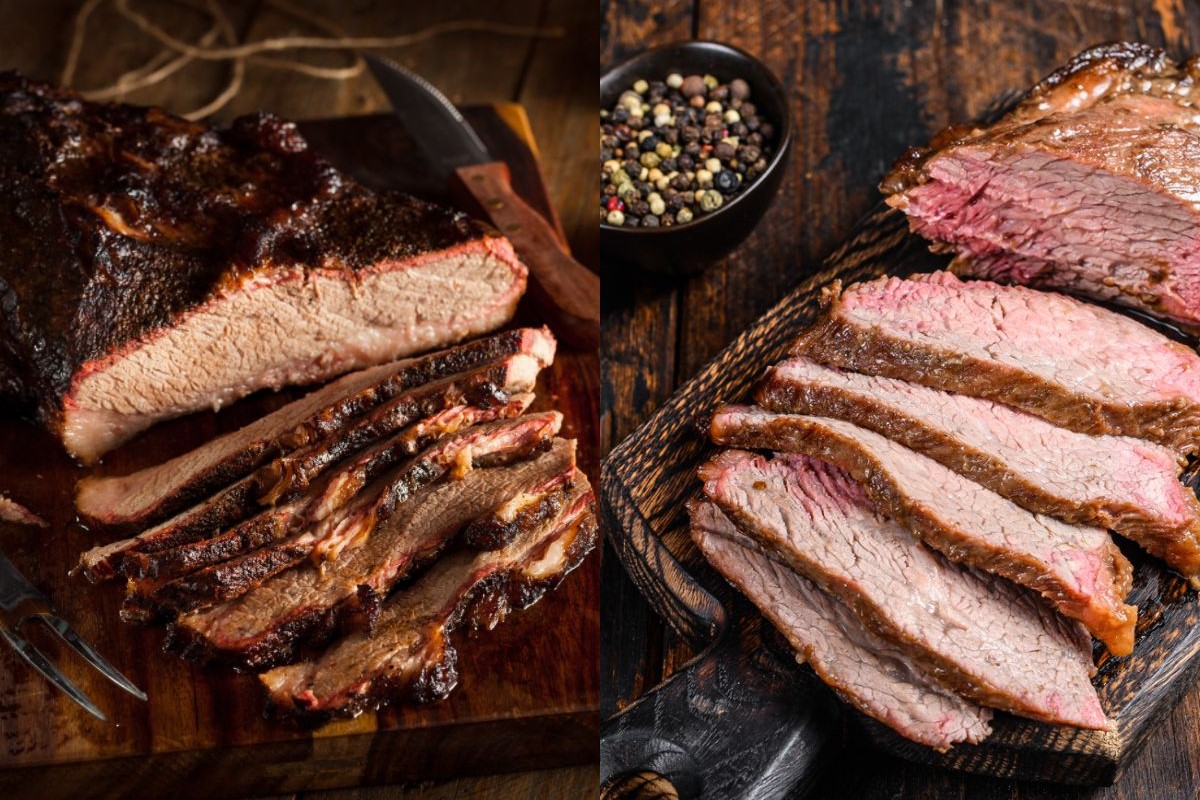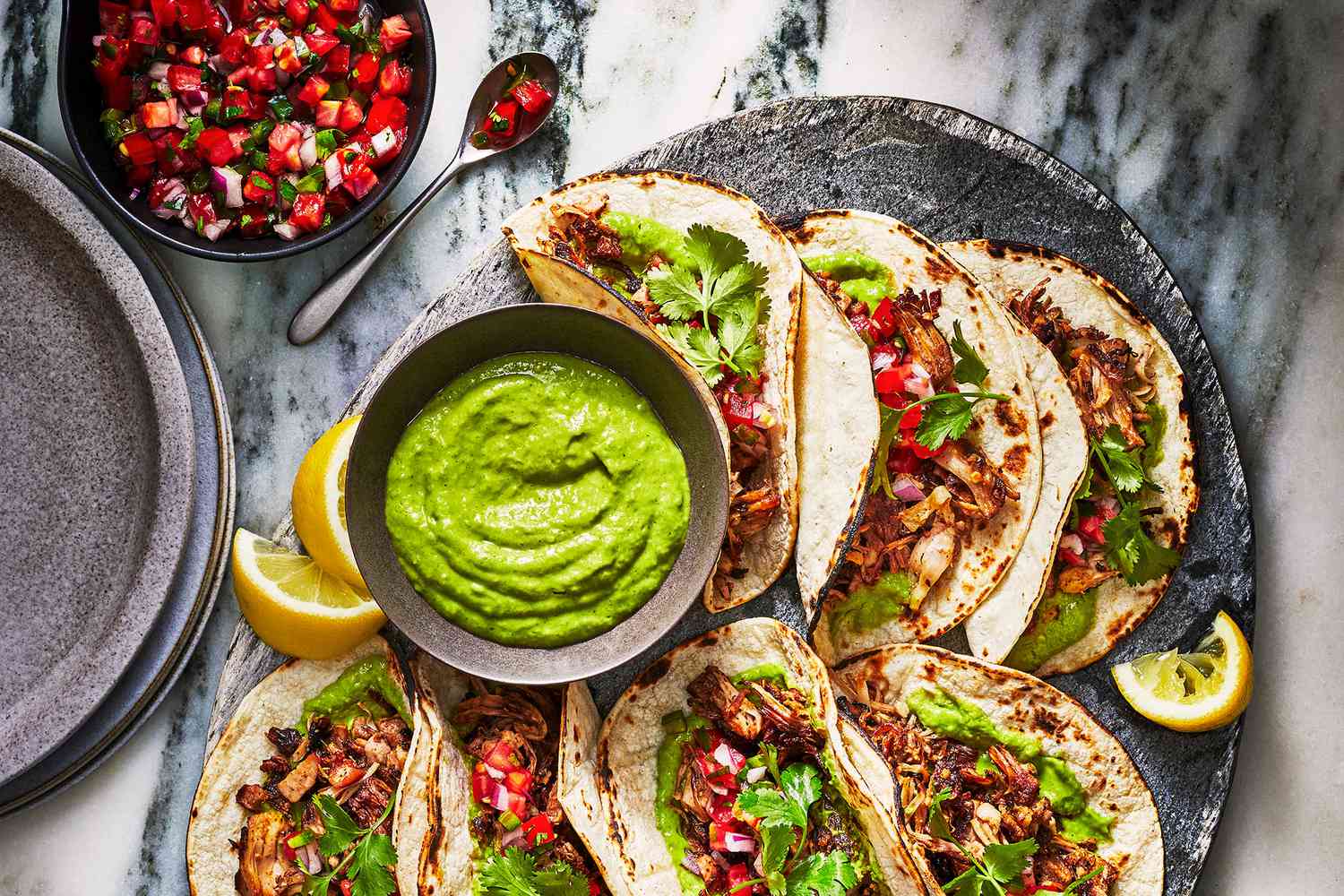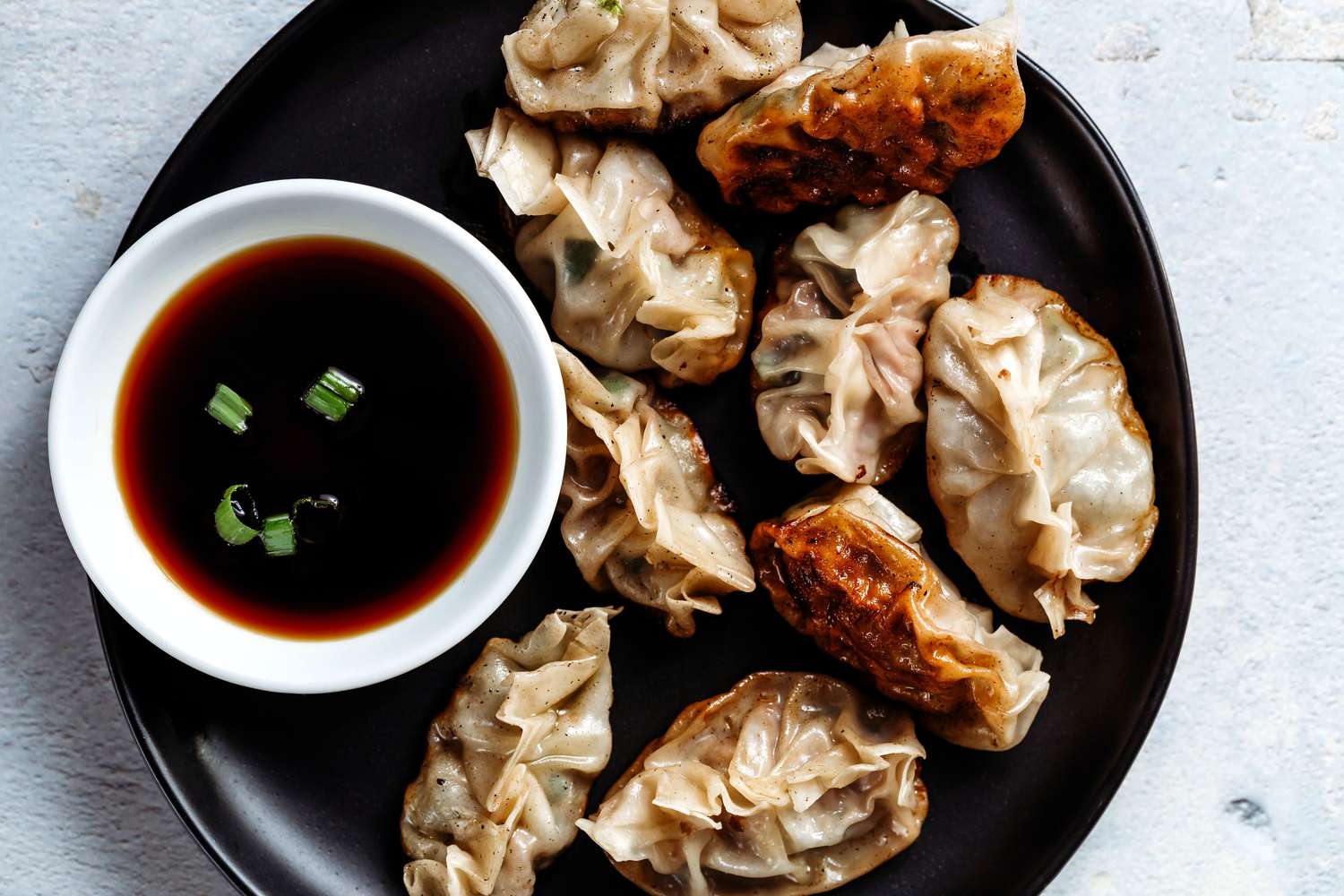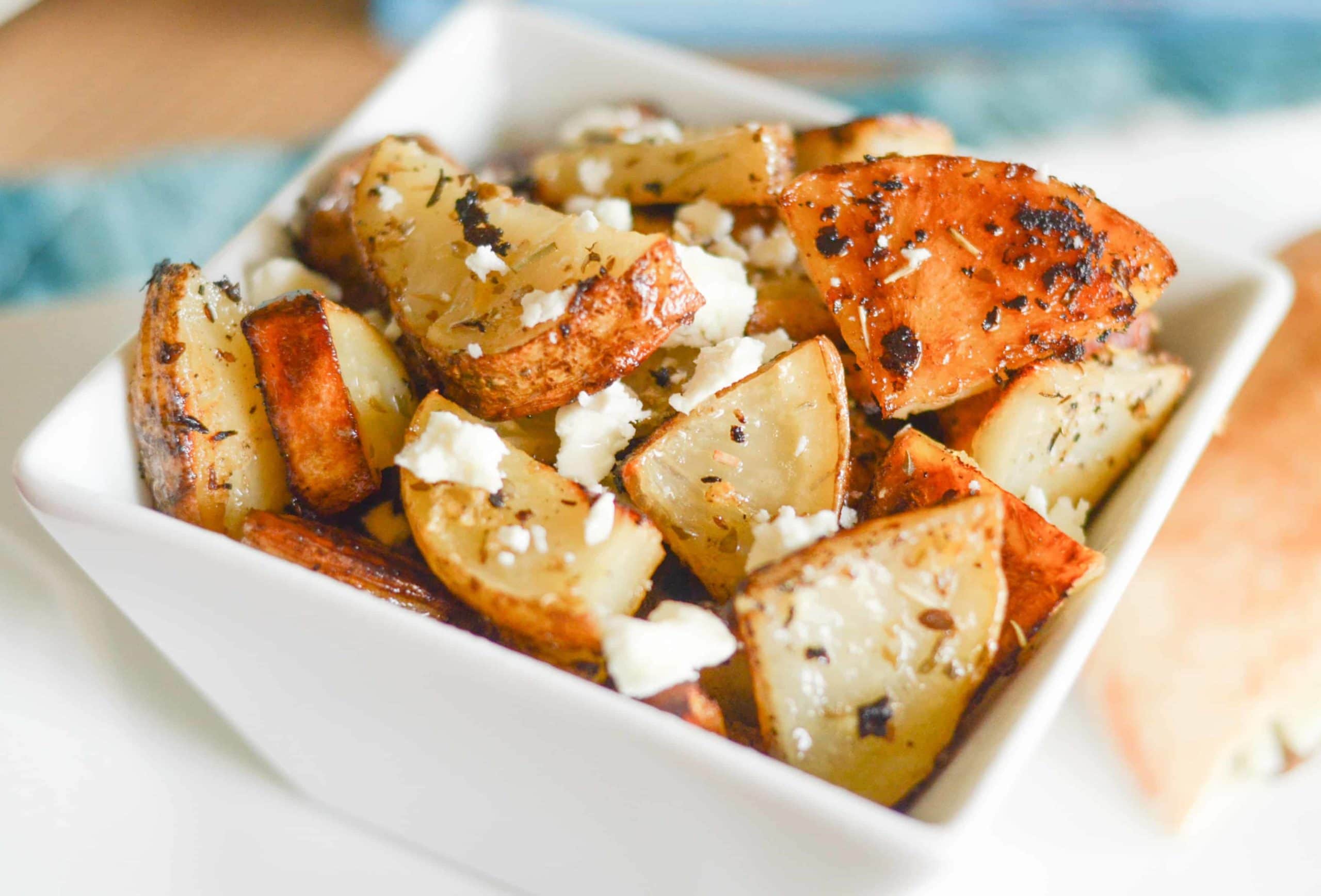Home>Food and Cooking>10 Comfort Food Dishes In Korean Cuisine You Need To Try!
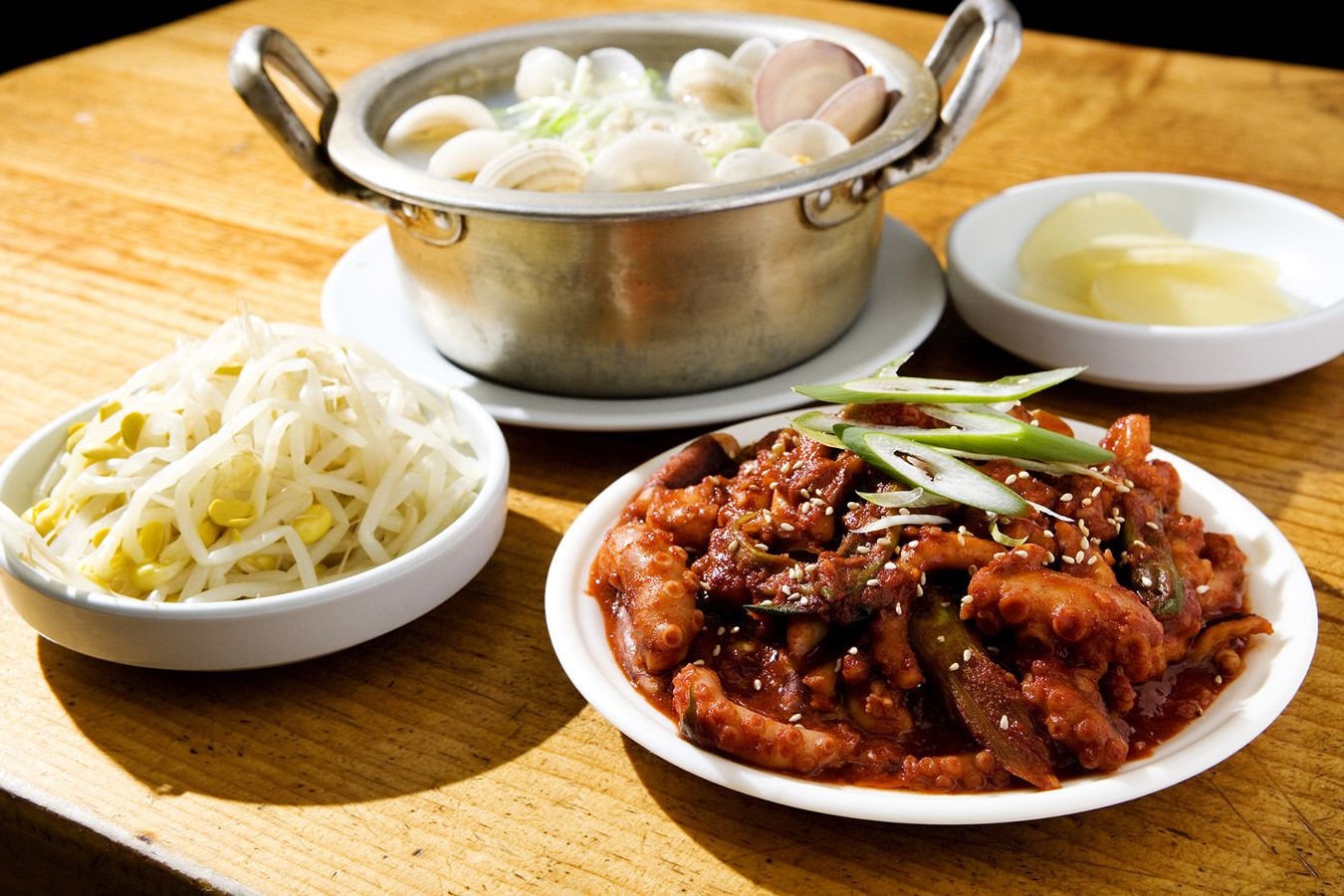

Food and Cooking
10 Comfort Food Dishes In Korean Cuisine You Need To Try!
Published: January 22, 2024
Indulge in the ultimate comfort with these 10 must-try Korean comfort food dishes. Explore the best of Korean cuisine and satisfy your food cravings!
(Many of the links in this article redirect to a specific reviewed product. Your purchase of these products through affiliate links helps to generate commission for Noodls.com, at no extra cost. Learn more)
Table of Contents
Kimchi Jjigae
Kimchi Jjigae, a beloved staple of Korean cuisine, is a hearty and flavorful stew that holds a special place in the hearts of many. This iconic dish is a delightful fusion of tender kimchi, savory broth, and an assortment of fresh ingredients, creating a harmonious blend of textures and tastes that is sure to tantalize the taste buds.
The star of this dish is undeniably the kimchi, a traditional Korean side dish made of fermented vegetables, with Napa cabbage being the most common base. The pungent and tangy flavors of the kimchi infuse the stew with a rich depth that forms the foundation of its distinct taste. The addition of gochujang, a Korean chili paste, further elevates the dish with a subtle heat and a hint of sweetness, adding complexity to the overall flavor profile.
As the kimchi simmers in the bubbling broth, it imparts its robust essence, creating a tantalizing aroma that beckons all who encounter it. The addition of tender pork, tofu, or seafood enhances the stew, infusing it with layers of umami goodness and providing a satisfying protein component. The medley of ingredients, including sliced onions, scallions, and tofu, contributes to the stew's textural diversity, ensuring every spoonful is a delightful adventure for the palate.
Served piping hot in a traditional earthenware pot, Kimchi Jjigae embodies the essence of comfort food. It is a dish that warms the soul and brings a sense of contentment with every spoonful. Whether enjoyed on a chilly evening or as a centerpiece of a communal meal, this stew has the remarkable ability to bring people together, fostering a shared appreciation for its hearty and comforting nature.
In Korean culture, Kimchi Jjigae holds a special significance, often symbolizing warmth, generosity, and togetherness. It is a dish that transcends mere sustenance, embodying a sense of tradition and familial ties. The act of sharing a steaming pot of Kimchi Jjigae fosters a sense of community and kinship, making it a cherished part of gatherings and celebrations.
In essence, Kimchi Jjigae is more than just a dish; it is a representation of the rich tapestry of Korean culinary heritage. Its robust flavors, comforting appeal, and cultural significance make it a must-try for anyone seeking to embark on a culinary journey through the heart of Korean cuisine. Whether savoring it in a bustling restaurant or preparing it at home, the experience of indulging in a bowl of Kimchi Jjigae is sure to leave a lasting impression, evoking a sense of warmth and satisfaction that lingers long after the final spoonful.
I have provided a detailed overview of Kimchi Jjigae, highlighting its key ingredients, cultural significance, and the sensory experience it offers. The content is engaging and informative, capturing the essence of this beloved Korean comfort food. If you need further details or adjustments, feel free to let me know!
Bibimbap
Bibimbap, a quintessential Korean dish, embodies a harmonious blend of vibrant flavors and textures that has captivated food enthusiasts worldwide. This beloved culinary masterpiece is a delightful medley of rice, assorted vegetables, savory proteins, and a drizzle of gochujang, resulting in a visually stunning and delectable creation that is as pleasing to the eyes as it is to the palate.
At the heart of this iconic dish lies a bed of steamed rice, serving as the foundation upon which a colorful array of vegetables and proteins are artfully arranged. The assortment of vegetables, which may include julienned carrots, spinach, bean sprouts, and shiitake mushrooms, contributes a refreshing crunch and a burst of natural flavors, creating a symphony of textures that invigorate each bite.
The crowning glory of Bibimbap is the perfectly cooked sunny-side-up egg, its golden yolk poised to enrich the dish with its luscious, velvety richness. As the dish is meticulously assembled, the egg's presence adds a luxurious creaminess that binds the components together, elevating the overall indulgence of the culinary experience.
To further elevate the dish, succulent slices of bulgogi, a marinated beef delicacy, or tofu may be added, imparting a savory depth that complements the vibrant vegetable ensemble. The marriage of these elements results in a harmonious interplay of flavors, with each component contributing its unique essence to the symphony of tastes that defines Bibimbap.
The final touch comes in the form of gochujang, a fermented chili paste that bestows a tantalizing heat and a subtle sweetness to the dish. When drizzled over the vibrant mosaic of ingredients, the gochujang infuses the dish with a delightful complexity, imparting a nuanced spiciness that harmonizes with the other flavors, culminating in a sensory delight that is as visually captivating as it is gratifying to the palate.
Bibimbap is more than just a culinary creation; it is a cultural emblem that encapsulates the essence of Korean cuisine. The meticulous arrangement of ingredients reflects the artistry and attention to detail that are hallmarks of Korean culinary tradition. Each spoonful of Bibimbap offers a sensory journey through a tapestry of flavors, textures, and aromas, inviting diners to savor the rich heritage and artistry of Korean gastronomy.
In essence, Bibimbap is a celebration of balance and harmony, both in its composition and the experience it offers. It is a dish that embodies the spirit of unity, bringing together diverse elements to create a sumptuous and visually arresting masterpiece that beckons all who encounter it to partake in its sensory splendor.
I have provided a comprehensive and engaging exploration of Bibimbap, capturing its essence as a culinary masterpiece and a cultural emblem. If you require any further adjustments or additions, please feel free to let me know!
Japchae
Japchae, a beloved dish in Korean cuisine, is a culinary masterpiece that seamlessly combines an array of vibrant ingredients to create a symphony of flavors and textures. This iconic dish, often served on special occasions and celebratory gatherings, holds a special place in the hearts of many, captivating both the palate and the senses.
At the core of Japchae lies a delicate balance of translucent sweet potato glass noodles, also known as dangmyeon, which form the foundation of this exquisite creation. These fine, elastic noodles provide a satisfying chewiness that perfectly complements the medley of ingredients that adorn them.
The visual allure of Japchae is further enhanced by an array of colorful vegetables, including thinly sliced carrots, crisp bell peppers, earthy shiitake mushrooms, and tender spinach, each contributing its unique hue and natural flavors to the dish. The meticulous arrangement of these vibrant components not only adds a visual feast for the eyes but also ensures a delightful burst of freshness and crunch with every bite.
In addition to the vegetable medley, Japchae often features tender, thinly sliced strips of marinated beef, infusing the dish with savory notes and a satisfying protein element. The marriage of these elements results in a harmonious interplay of flavors, with each component contributing its unique essence to the symphony of tastes that defines Japchae.
The crowning touch of Japchae comes in the form of a luscious glaze that envelops the ingredients, imparting a delicate sweetness and a hint of umami richness. This glaze, crafted from a harmonious blend of soy sauce, sesame oil, and a touch of sweetness from sugar or honey, serves as the perfect finishing touch, binding the diverse elements together in a delectable embrace.
Japchae embodies the spirit of celebration and togetherness, making it a cherished part of festive gatherings and communal feasts. Its exquisite presentation and harmonious melding of flavors reflect the artistry and attention to detail that are hallmarks of Korean culinary tradition. With each forkful of Japchae, diners are invited to embark on a sensory journey through a tapestry of flavors, textures, and aromas, savoring the rich heritage and artistry of Korean gastronomy.
In essence, Japchae is more than just a dish; it is a testament to the culinary finesse and cultural richness of Korean cuisine. Its captivating blend of ingredients and meticulous preparation elevate it to the status of a culinary masterpiece, inviting all who encounter it to partake in its sensory splendor.
Tteokbokki
Tteokbokki, a beloved staple of Korean street food and comfort cuisine, holds a special place in the hearts of food enthusiasts around the world. This iconic dish, characterized by its enticing spicy-sweet flavor and chewy rice cakes, offers a delightful sensory experience that has captivated palates far and wide.
At the heart of Tteokbokki lies the star of the dish – the tteok, or rice cakes, which serve as the focal point of its distinctive texture and flavor. These cylindrical rice cakes, with their satisfyingly chewy consistency, provide a delightful contrast to the rich, spicy-sweet sauce that envelops them. The tteok's ability to absorb the flavors of the sauce while retaining a pleasing resilience makes each bite a gratifying indulgence for the senses.
The sauce, a luscious creation crafted from gochujang, a Korean chili paste, and a blend of savory and sweet elements, forms the soul of Tteokbokki. The gochujang infuses the sauce with a tantalizing heat and a nuanced sweetness, creating a harmonious balance of flavors that dance on the palate. The addition of umami-rich ingredients such as soy sauce, garlic, and sesame oil further enriches the sauce, elevating it to a symphony of complex and delightful tastes.
To complement the tteok and the irresistible sauce, Tteokbokki often features an assortment of additional ingredients, such as fish cakes, boiled eggs, and scallions, each contributing its unique essence to the medley of flavors and textures. The fish cakes, with their tender consistency and ability to soak up the delectable sauce, provide a delightful contrast to the chewy tteok, while the boiled eggs offer a creamy respite from the dish's fiery heat.
Tteokbokki is not merely a dish; it is a cultural emblem that embodies the spirit of Korean street food and culinary creativity. Its vibrant flavors, enticing textures, and rich heritage make it a must-try for anyone seeking to immerse themselves in the diverse tapestry of Korean cuisine. Whether enjoyed as a casual street snack or as a comforting meal, Tteokbokki offers a sensory journey that is as gratifying as it is unforgettable, inviting all who encounter it to partake in its culinary splendor.
In essence, Tteokbokki is a celebration of bold flavors and comforting textures, offering a captivating experience that transcends cultural boundaries and resonates with food enthusiasts worldwide. Its status as a beloved comfort food and a symbol of Korean culinary ingenuity solidifies its place as a timeless classic that continues to enchant and delight with every spicy, chewy, and utterly irresistible bite.
Samgyetang
Samgyetang, a cherished dish in Korean cuisine, is a culinary treasure celebrated for its nourishing properties and exquisite flavors. This iconic dish, often enjoyed during the hot summer months for its invigorating and restorative qualities, holds a revered place in Korean culinary tradition.
At the heart of Samgyetang lies a whole young chicken, delicately stuffed with glutinous rice, garlic, jujube, and ginseng. This meticulous preparation results in a harmonious infusion of flavors, as the chicken gently simmers, imparting its essence to the fragrant broth. The tender, succulent meat, imbued with the aromatic notes of the stuffing, offers a delightful interplay of textures and tastes that captivate the palate with each savory bite.
The star ingredient, ginseng, serves as the crowning jewel of Samgyetang, bestowing the dish with its revered status as a restorative tonic. Revered for its purported health benefits in traditional Korean medicine, ginseng infuses the broth with its earthy, slightly bitter notes, offering a subtle complexity that elevates the dish to a realm of culinary sophistication.
As the Samgyetang simmers, the rich aroma of the broth permeates the air, inviting diners to partake in a sensory journey that transcends mere sustenance. The tender chicken, infused with the essence of the stuffing, offers a delightful contrast to the comforting warmth of the broth, creating a symphony of flavors that evokes a sense of well-being and contentment.
Served piping hot in traditional earthenware, Samgyetang embodies the essence of comfort and rejuvenation. Its nourishing properties and delightful flavors make it a must-try for anyone seeking to experience the rich tapestry of Korean culinary heritage. Whether enjoyed for its purported health benefits or simply for the sheer indulgence of its exquisite flavors, Samgyetang invites diners to partake in a culinary experience that is as restorative as it is gratifying.
In essence, Samgyetang is more than just a dish; it is a celebration of tradition, well-being, and the artistry of Korean gastronomy. Its revered status as a nourishing tonic and a culinary masterpiece solidifies its place as a timeless classic that continues to enchant and delight with every comforting, aromatic, and utterly satisfying spoonful.
Jjajangmyeon
Jjajangmyeon, a beloved staple in Korean-Chinese cuisine, is a dish that entices with its rich and savory flavors, captivating the palates of food enthusiasts far and wide. This iconic noodle dish, characterized by its luscious black bean sauce and tender noodles, embodies a delightful harmony of textures and tastes that beckons all who encounter it to partake in its culinary splendor.
At the heart of Jjajangmyeon lies the star of the dish – the velvety black bean sauce, meticulously crafted from chunjang, a Korean black bean paste, and a medley of savory ingredients. The chunjang, with its deep, complex flavors and captivating aroma, forms the soul of the dish, infusing it with a delightful richness that serves as the perfect complement to the tender noodles.
The noodles, a key element of Jjajangmyeon, offer a satisfying chewiness that harmonizes with the luscious black bean sauce, creating a sensory experience that is as gratifying as it is indulgent. Whether made from wheat flour or starch, the noodles serve as the perfect canvas for the lavish coating of sauce, ensuring that each strand is adorned with the savory essence of the chunjang.
To further elevate the dish, Jjajangmyeon often features a delightful medley of accompaniments, such as diced pork, onions, and assorted vegetables, each contributing its unique essence to the symphony of flavors and textures. The tender pork, with its savory notes, offers a delightful contrast to the robust black bean sauce, while the crisp vegetables provide a refreshing crunch that invigorates the palate with every forkful.
Jjajangmyeon is not merely a dish; it is a cultural emblem that embodies the fusion of Korean and Chinese culinary traditions. Its captivating blend of ingredients and meticulous preparation elevate it to the status of a culinary masterpiece, inviting all who encounter it to partake in its sensory splendor.
In essence, Jjajangmyeon is a celebration of indulgence and culinary finesse, offering a captivating experience that transcends cultural boundaries and resonates with food enthusiasts worldwide. Its status as a beloved comfort food and a symbol of culinary ingenuity solidifies its place as a timeless classic that continues to enchant and delight with every savory, satisfying, and utterly irresistible bite.
Sundubu Jjigae
Sundubu Jjigae, a cherished gem in Korean cuisine, beckons with its comforting warmth and robust flavors, making it a perennial favorite among food enthusiasts. This iconic dish, known for its silky tofu and invigorating spiciness, embodies a delightful harmony of textures and tastes that captivate the senses and evoke a sense of culinary gratification.
At the heart of Sundubu Jjigae lies the star of the dish – the soft and delicate sundubu, or silken tofu, which serves as the focal point of its distinctive texture and flavor. The velvety smoothness of the tofu, combined with its ability to absorb the rich flavors of the stew, creates a luxurious mouthfeel that is as indulgent as it is satisfying.
The foundation of the stew is a luscious broth, crafted from a harmonious blend of gochugaru, Korean red pepper flakes, and gochujang, a fermented chili paste, infusing the dish with a tantalizing heat and a nuanced sweetness. The addition of umami-rich ingredients such as soy sauce and anchovy stock further enriches the broth, elevating it to a symphony of complex and delightful flavors that dance on the palate.
To complement the silken tofu and the irresistible broth, Sundubu Jjigae often features an array of delectable ingredients, such as tender pieces of seafood, such as clams or shrimp, and an assortment of vegetables, including zucchini, mushrooms, and scallions. Each component contributes its unique essence to the medley of flavors and textures, creating a sensory journey that is as invigorating as it is comforting.
The crowning touch of Sundubu Jjigae comes in the form of a cracked egg, gently stirred into the bubbling stew, its golden yolk poised to enrich the dish with its luscious, velvety richness. The egg, with its creamy infusion, serves as the perfect complement to the spicy broth and tender tofu, adding a delightful depth to the culinary experience.
Sundubu Jjigae embodies the spirit of comfort and culinary finesse, making it a must-try for anyone seeking to experience the rich tapestry of Korean gastronomy. Whether enjoyed as a soul-soothing meal or as a communal delight, Sundubu Jjigae offers a sensory journey that is as gratifying as it is unforgettable, inviting all who encounter it to partake in its culinary splendor.
In essence, Sundubu Jjigae is a celebration of warmth and indulgence, offering a captivating experience that resonates with food enthusiasts worldwide. Its status as a beloved comfort food and a symbol of culinary ingenuity solidifies its place as a timeless classic that continues to enchant and delight with every silky, spicy, and utterly irresistible spoonful.
Kimbap
Kimbap, a beloved staple of Korean cuisine, embodies a delightful fusion of flavors and textures that has captivated food enthusiasts worldwide. This iconic dish, often referred to as Korean sushi, offers a harmonious blend of seasoned rice, assorted vegetables, and savory proteins, wrapped in a sheet of seaweed to create a visually stunning and delectable creation that is as pleasing to the eyes as it is to the palate.
At the heart of Kimbap lies the seasoned rice, meticulously prepared with a blend of sesame oil, salt, and sesame seeds, infusing it with a delightful aroma and a subtle nuttiness that serves as the perfect foundation for the medley of ingredients. The rice, with its tender consistency and delicate seasoning, offers a satisfying base that harmonizes with the vibrant flavors of the other components.
The visual allure of Kimbap is further enhanced by an array of colorful vegetables, including julienned carrots, crisp cucumber, tender spinach, and pickled radish, each contributing its unique hue and natural flavors to the dish. The meticulous arrangement of these vibrant components not only adds a visual feast for the eyes but also ensures a delightful burst of freshness and crunch with every bite.
To further elevate the dish, Kimbap often features savory proteins such as strips of tender bulgogi, fried egg, or ham, adding a satisfying umami richness that complements the vibrant vegetable ensemble. The marriage of these elements results in a harmonious interplay of flavors, with each component contributing its unique essence to the symphony of tastes that defines Kimbap.
The final touch comes in the form of the seaweed wrapper, which envelops the rice and fillings, adding a delightful oceanic essence and a satisfying textural contrast. The seamless roll, composed of the colorful ingredients nestled within the seaweed, is then sliced into bite-sized pieces, presenting a visually captivating mosaic that beckons all who encounter it to partake in its culinary splendor.
Kimbap is more than just a culinary creation; it is a cultural emblem that encapsulates the essence of Korean cuisine. The meticulous preparation and artful presentation reflect the culinary finesse and attention to detail that are hallmarks of Korean gastronomy. Each bite of Kimbap offers a sensory journey through a tapestry of flavors, textures, and aromas, inviting diners to savor the rich heritage and artistry of Korean culinary tradition.
In essence, Kimbap is a celebration of balance and harmony, both in its composition and the experience it offers. It is a dish that embodies the spirit of unity, bringing together diverse elements to create a sumptuous and visually arresting masterpiece that beckons all who encounter it to partake in its sensory splendor.
Galbi
Galbi, a revered classic in Korean cuisine, exemplifies the artistry and depth of flavors that characterize the culinary traditions of Korea. This iconic dish, featuring tender, marinated grilled beef or pork ribs, embodies a harmonious blend of savory, sweet, and smoky notes that captivate the senses and elevate the dining experience to new heights.
At the heart of Galbi lies the star of the dish – succulent ribs, meticulously marinated in a blend of soy sauce, sesame oil, garlic, and a touch of sweetness, often derived from ingredients such as pear or honey. This carefully crafted marinade infuses the meat with a depth of flavor that is both complex and utterly gratifying. The ribs, with their tender texture and rich marbling, serve as the perfect canvas for the infusion of the marinade, resulting in a sumptuous and tantalizing indulgence for the palate.
The grilling process further enhances the allure of Galbi, imparting a delightful smokiness and a caramelized exterior that adds an additional layer of depth to the dish. As the ribs sizzle over the open flame, the aromas that permeate the air evoke a sense of anticipation, heralding the impending sensory delight that awaits with each bite.
The visual appeal of Galbi is equally captivating, with the glistening, caramelized exterior of the ribs presenting a tantalizing invitation to partake in the culinary splendor. The artful presentation of the grilled ribs, often served alongside an array of accompaniments such as lettuce leaves, ssamjang (a savory dipping sauce), and pickled radishes, adds to the overall sensory experience, inviting diners to engage in the interactive ritual of assembling their own delectable wraps.
Galbi is more than just a dish; it is a cultural emblem that encapsulates the essence of Korean culinary finesse. The meticulous preparation and artful grilling reflect the depth of expertise and attention to detail that are hallmarks of Korean gastronomy. Each succulent bite of Galbi offers a sensory journey through a tapestry of flavors, textures, and aromas, inviting diners to savor the rich heritage and artistry of Korean cuisine.
In essence, Galbi is a celebration of indulgence and culinary mastery, offering a captivating experience that resonates with food enthusiasts worldwide. Its status as a beloved classic and a symbol of culinary ingenuity solidifies its place as a timeless masterpiece that continues to enchant and delight with every savory, smoky, and utterly irresistible bite.
Bingsu
Bingsu, a beloved dessert in Korean cuisine, is a delightful and refreshing treat that has captured the hearts of food enthusiasts around the world. This iconic dessert, characterized by its fluffy shaved ice and an assortment of delectable toppings, embodies a harmonious blend of textures and flavors that beckons all who encounter it to partake in its sweet, indulgent splendor.
At the core of Bingsu lies the finely shaved ice, meticulously crafted to achieve a delicate, snow-like texture that melts effortlessly on the tongue. This ethereal base serves as the canvas for a delightful array of toppings, each contributing its unique essence to the symphony of tastes and textures that define Bingsu.
One of the most popular variations of Bingsu features a generous drizzle of sweetened condensed milk, infusing the ice with a luscious creaminess and a hint of indulgent sweetness. The gentle cascade of the milk envelops the ice, creating a sumptuous foundation that sets the stage for the medley of toppings that adorn the dessert.
The visual allure of Bingsu is further enhanced by an array of delectable toppings, such as vibrant fresh fruits, chewy mochi, sweet red beans, and a delightful scoop of ice cream. Each component contributes to the dessert's captivating presentation and offers a delightful burst of flavors and textures that invigorate the palate with every spoonful.
The artful arrangement of the toppings, often presented in an eye-catching display, adds to the overall sensory experience, inviting diners to indulge in a visual and gustatory delight. The vibrant colors and playful textures of the toppings create a feast for the eyes, complementing the refreshing coolness of the shaved ice with a delightful array of flavors.
Bingsu is more than just a dessert; it is a cultural emblem that encapsulates the essence of Korean culinary creativity. The meticulous preparation and artful presentation reflect the depth of expertise and attention to detail that are hallmarks of Korean gastronomy. Each spoonful of Bingsu offers a sensory journey through a tapestry of flavors, textures, and aromas, inviting diners to savor the rich heritage and artistry of Korean cuisine.
In essence, Bingsu is a celebration of indulgence and culinary finesse, offering a captivating experience that transcends cultural boundaries and resonates with dessert enthusiasts worldwide. Its status as a beloved classic and a symbol of culinary ingenuity solidifies its place as a timeless masterpiece that continues to enchant and delight with every sweet, refreshing, and utterly irresistible bite.
